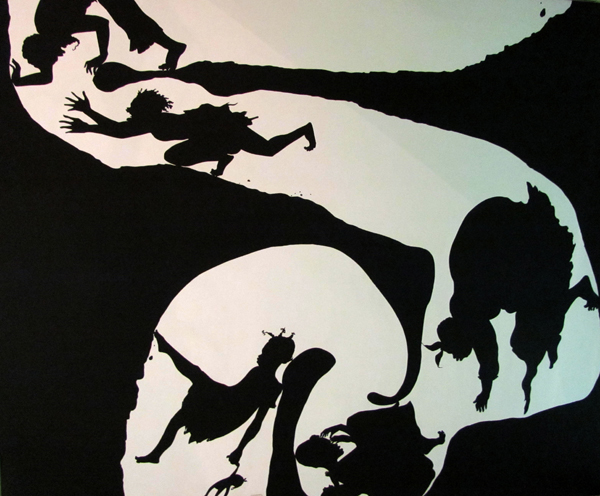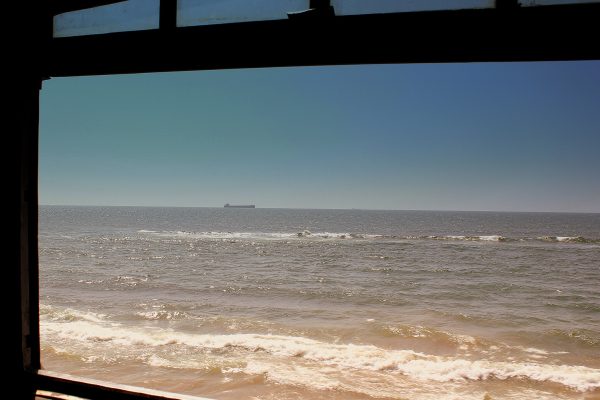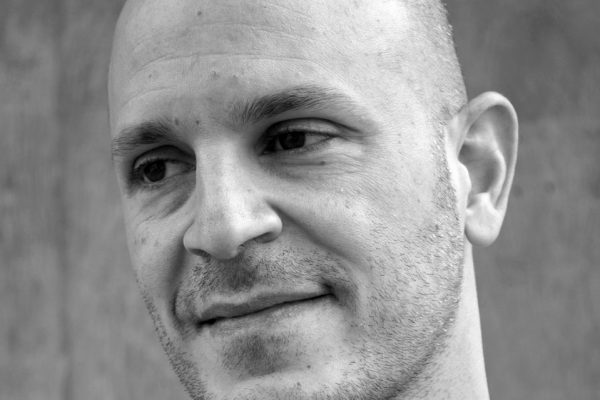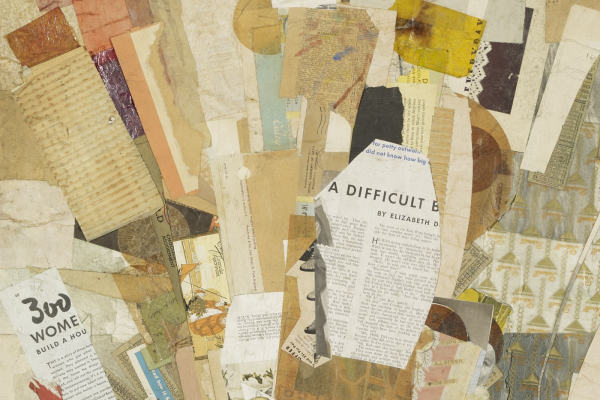Race is potentially the most salient matter in American discourse, and contemporary poetry has started to get the message. Many poets and critics have been honest about the exclusionary hegemonic lyric position of the late nineties and early twenty-first century, when many aesthetic movements came and went, but very few considered the paradoxical identity of the othered, including the person of color. Texts once excluded from the categories of the lyric or “American poetry” more generally, pigeonholed instead under the umbrella of “multiculturalism,” are now being reread as forces of influence despite a Euro- and U.S.-centric canon. Political crises and systemic racism have forced our aesthetic hands, and our most robust conversations on poetics address the myriad affects of a polyphonic American lyric voice.
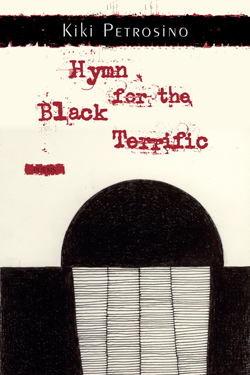 More poets are dissecting the personal and shared experience of a post-global United States battered from decades of war and polarizing politics, contesting the offhand and sometimes facile liberal humanism in poems meant to address racial difference. LaTasha N. Nevada Diggs’s TwERK, for example, is a multilingual performance of linguistic personae. Sherwin Bitsui’s Flood Song combines Native American lyric traditions with contemporary practices of disjunction and fragmentation to harmonize the polyphonic filaments of his lyric position.
More poets are dissecting the personal and shared experience of a post-global United States battered from decades of war and polarizing politics, contesting the offhand and sometimes facile liberal humanism in poems meant to address racial difference. LaTasha N. Nevada Diggs’s TwERK, for example, is a multilingual performance of linguistic personae. Sherwin Bitsui’s Flood Song combines Native American lyric traditions with contemporary practices of disjunction and fragmentation to harmonize the polyphonic filaments of his lyric position.
Joining these voices, Kiki Petrosino’s Hymn for the Black Terrific inscribes the black female body into the lyric, while maintaining the lyric spectacle readers encountered in her first book, Fort Red Border (2009). She recuperates historical and cultural (mis)figurations of blackness and embodiment in a curiously visceral lyric that, like Kara Walker’s visual appropriation of antebellum imagery, uncovers the complicated racial imaginary of the American canon. They are both meticulous and rococo archivists of bodies made invisible by history and violence.
In the 2015 essay “Literacy Narrative,” Petrosino expresses anxiety about writing race at the risk of framing an over-politicized voice and considers times she feared that her work would be ascribed merely to identity and not to a more holistic or linguistically complex sensibility:
It has taken me many years, and a lot of study, to realize that compelling language and a politically engaged sensibility can coexist in the same poem. And, more precisely: that I can write a poem that addresses race in those terms. At the same time, my blackness is personal, and I can’t write about race without talking about my family and tracing our particular path through the landscape of American history. I’m still learning how to do this.
Hymn for the Black Terrific is the fruit of this work: it examines the ruptures and collisions of blackness and whiteness in art and history in poems about China, food, foremothers, and hunger, and most importantly, the body as a curiosity.
• • •
The book’s title alludes to a passage in Moby-Dick:
He was naturally a very nervous, shuddering sort of little fellow, this bread-faced steward; the progeny of a bankrupt baker and a hospital nurse. And what with the standing spectacle of the black terrific Ahab, and the periodical tumultuous visitations of these three savages, Dough-Boy’s whole life was one continual lip-quiver.
The depiction of “black terrific Ahab” in opposition to Dough-Boy’s middle-class heritage reinforces problematic binaries of whiteness and blackness, supremacy and savagery. Jeffrey Downward suggests that Ahab’s nemesis is the whale’s awful whiteness because “the color white stands for what is most noble and pure, and at the same time also stands for what is most deadly.” This binary of white as a civilizing force and blackness as savagery is prevalent in mid-nineteenth-century literature, a script Petrosino flips, following Melville, by depicting the historical and cultural legibility of blackness as a site of sublimity, an energy overlooked or reviled by this canon. In an essay about Kara Walker’s silhouettes, which refer to the curiosities of antebellum culture and create a Boschian grandeur of black figures, cultural critic Joan Copjec writes, “The life experiences of the figures she draws are notably alien to her, and the inquiry in which her work is engaged is that of figuring out how this largely foreign past could still be said to form part of her own.” The voices and images in many of these poems are laden with history, forging an opening, like Walker’s work, rather than foreclosing meaning, as the historicizing gaze most often does.
A quotation from a canonical work with a vexed place in the racial imaginary, the book’s epigraph—“I scarcely dared to look / to see what it was I was”— is a line from Elizabeth Bishop’s poem “In the Waiting Room,” which describes a synchronous sensual experience: a girl’s becoming a woman while her aunt has painful dental work in the next room. Earlier in Bishop’s poem, the girl thumbs through the pages of a National Geographic, where she sees
black, naked women with necks
wound round and round with wire
like the necks of light bulbs.
Their breasts were horrifying.
Although Petrosino’s use of the epigraph is an apt gesture for a book about coming of age, the imagery from the magazine makes the black female body a figure for terror; this lyric volta is performed at the expense of African women’s bodies. The irony of the gesture signals Petrosino’s larger project of recalibrating responses to blackness.
The book’s first section, “Oiseau Rebelle” (after an aria from Bizet’s Carmen), begins with the poem “Personal Style Monologue,” a series of paratactic declarations of the “ins and outs” of an aspiration to curate selfhood. The ins and outs are mostly about affect and fashion (“Anger is out. / Bacon is in. Sparkle is in.”), and reveals a young speaker making countercultural or renegade choices, but the poem ends politically: “America is out. America is out / The dark is here.” The gesture is not a denunciation of the United States, but a matter of fact: America is at the cusp of a reinvention. Petrosino plays with the reader’s expectation of darkness as abasement, but also suggests the arrival of a transformative darkness.
The book’s primary occasion is a trip to China, where the speaker’s defamiliarization prompts introspection. She confronts the dissonance of her new setting in the poem “Postcard from Ogun State,” which is a series of firsts:
I’ve never seen a bat before
& then I have. I’ve never seen rain dripping hard through a hole in a
cloth umbrella, & then a driver picks me up for dinner in the rain.
This heightened awareness leads the speaker to a consideration of where her subject position has taken her thus far. The poem’s last lines are “So this is what I’ve been tilting / at, for so long. This is the face I’ve asked to see.” As the trip triggers meditation on margins and otherness, and on her visibility in China, she finds renewed purposes for her work, writing the various traces of influence and inheritance: her (in)visibility has been recalibrated, so that her experience of race in China recasts her as tourist in her own sensibility.
The poem “Alverta,” for example, describes her grandmother, whose legacy, she had indicated in “Literacy Narrative,” she wished to memorialize:
I wish to put it into some kind of order. Ashes, oyster shells, my mid-Atlantic bones. My grandmama at twelve, walking away from the farm in Virginia, leaving the little Negro school that only went up to sixth grade.
Beyond homage, the resulting poem’s imperative voice and second person implicate the reader, and later the poet herself, in the gesture of recuperating Alverta’s erasure:
Say she was noble: a bright & foreign kind. Her long-gloved hands,
her smell of coins & salt. She had a way of staring over the yokes
of trees at you. Slim, in her woven skirt & church heels. All that
light hair twisting through a comb like speech. Now say the railroad
came & changed the whole county. Railroad came & slithered over
the mountains to where you can’t catch. Tobacco in the lungs, grease
unfolding in the mouth. How, year by year, your father’s voice grew
narrower.
Writing about the lineage of her foremothers becomes crucial to the construction of Petrosino’s own lyric position. In the book’s title poem, the speaker uses hands “dark with craft” to subvert racial expectation and challenge the reader to “Come see what I’ve digged / with the teeth in my face.”
Another graphic reinscription of the body in lyric space, the poem “Cygnus Cygnus” is a conversation about aesthetics that becomes an elegant appropriation of Pythagoras’s idea that “the souls of poets pass not from this world / but lodge themselves in the breastwork of swans.” The speaker argues that poets are not the white breast of the animal but the “feet of swans, black as drums //pressing our rageful webbing in the earth’s flank.” The poem celebrates the figurative world Petrosino finds with the teacher to whom the poem is dedicated, but she also relocates the sublime whiteness of Melville’s whale as a sublime darkness, more Burke than Kant. This refigured notion of sublimity consequently becomes an important motif for her project.
In the book’s second section, “Mulatress,” Petrosino unsettles syntax and employs cyclical image systems as formal experiments that enact alternative subjectivities, strategies that occupy the hypothetical space between a writerly lyric and persona. In a series of approximate sestinas, she interrogates Thomas Jefferson’s claim that “(M)isery is often the parent of the most affecting touches in poetry. Among the black is misery enough, God knows, but no poetry.” Petrosino’s mulatress-speaker, through the formal constraint of the sestina, projects language from Jefferson’s Notes on the State of Virginia about the negative eugenics of the black body. These appropriations appear in italics and are woven into the discourse of the colored body:
A colored body is a wreck they
rake with strobe light. All its secret
halls & winking panes. We know it less by
& by, a sunk ballroom. How the kidneys
weep in their niches & more
holy grow every hour. We measure beauty by the glands
or by the clear metronome of the skin.
The historical body is not degraded by the experiment. While the speaker reclaims Jefferson’s vile depictions of black bodily excess, she also constructs the affect of a woman whose identity is the product of a sinister power imbalance in American history. Her body is a set of easily transferable components, a horror made less dark by the poem’s music. That “terrific,” that awfulness, is subsumed by projection, which Petrosino defies with cool rigor.
“Mulatress” is like a book within a book, but the three sections still cohere around the complexity of the book’s “black terrific.” In the last section, “Turn Back Your Head & There Is the Shore,” we meet “the eater” in poems named after Chinese delicacies. Like Ahab, the eater is a voracious force; Alice Notley’s epigraph to the section alludes to this condition: “The Dark could not perceive its own form / It was not a silk to be worn.” Petrosino’s eater veers from excess to “a doll’s diet: four sips of milk & just/enough oil to coat the spoon.” Whereas the first section is a meditation on margins and otherness, the last section suggests symbiosis between an eater (with echoes of the mulatress) and her consuming affliction. In a return to the fleshy materialism of the first section, the body is an apparatus in “The Eating House,” where “Her hips / clasp over her old inward choke.” The poem’s eater wants a baby but a baby also comes with her own wants (“front teeth & silk-patched pillows”), and the entire section struggles with the push/pull of emptiness and invasion established in first-section poems like “Allergenesis” or “Books.”
The idyllic names of dishes in the third section’s linked poems—“Top of a Dumpling, Top of a Temple,” “Linked to Blood”—mirror the sensual culinary memory of the speaker, which incorporates history, art, and the world she occupies. Consuming the material world is safety; the being of the world is distorting. In “Mushroom Growing Beneath the Tree,” Petrosino hones in on the eater’s vexation:
The eater scarcely reckons what it is she is. Double drumsticks, belly
belt. She scarcely stomachs her own skin, off-color and channeled
through with caterpillar scars. How she always smells of care-home
lavender & something else beneath—a melting pinkness, a rotten
spot.
The force of history afflicts the body via the cultural baggage present in the dishes’ names and their resultant associations: the poems contain a curio cabinet of antebellum relics and Chinese comfort food, which serve as the prop meant to describe this eater’s tentative venture into “love as music in the mouth.”
Hymn for the Black Terrific reinscribes elided ancestral bodies, but it also locates blackness as a part of a lyric self, an ambition that is central to Petrosino’s overarching thinking about her work in relation to history:
I don’t believe my poetry can redeem the past. There’s no poem I can write that will give voice to voices lost to time, or reverse the ruptures made by centuries of violence. When I write, it’s my voice. This is how I sound when I’m speaking to you. I know it’s not enough, but I offer it in this moment. My poems have been praised for “scout[ing] a new path” through difficult material, for addressing heartbreak with humor. Always, I’m aware of the generations of sorrow that preceded me. I don’t have the power to erase that sorrow, but I can write about it.
In revisiting a classic American novel vis-à-vis race and assigning a complex subjectivity to a “mulatress” as a kind of historical corrective, Petrosino also revisits the terms that, despite their remoteness, still serve as filters through which she is defined. Petrosino is at the forefront of a deeply heterogeneous, expansive poetic movement, one that is transforming traditional lyric subjectivity into a more inclusive, complex space—not only of voices, but also of indeterminacies, bodies, and linguistic transgressions. Books in this mode may or may not engage explicitly with race as subject matter, but race is no longer a suspect act of political correctness poets are tacitly invited to overlook lest they be ghettoized.

